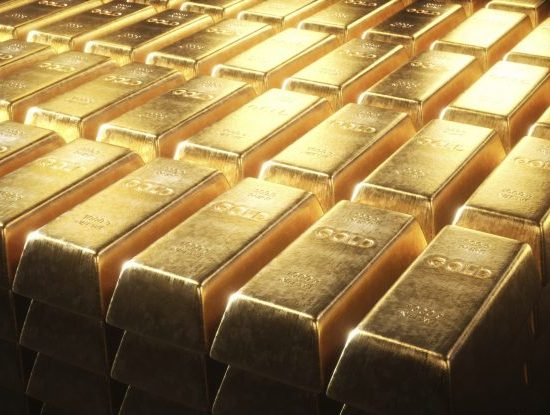 |By Matein Khalid|
|By Matein Khalid|
The sultanate of Oman has enjoyed phenomenal economic development success in the 45 year reign of His Majesty Sultan Qaboos bin Said. Modern Oman is one of the true social, political and economic success stories of the Arab world. However, the Achilles heel of the Omani economy is its huge dependence on oil and gas export earnings, 60% of the sultanate’s GDP. Standard and Poors just downgraded Oman’s sovereign credit rating to BBB-, below the lowest investment grade level. Oman producers 1 million barrels of oil a day, so the epic price crash since mid 2014 costs the sultanate at least $60 million a day in lost petrocurrency revenue. Unlike Abu Dhabi, whose sovereign wealth fund assets are at least four times its GDP, Oman cannot use foreign assets as a shock absorber to offset lower oil revenues. The State Reserve Funds, assets are estimated at only one third of the Omani GDP.
The Omani government is forced to embrace fiscal austerity as soon as oil prices plunge, as the Sultanate’s 2016 Budget attests. Unfortunately, 50% of government spending is on wages, subsidies, social welfare programs for one of the youngest populations in the Middle East. The IMF estimates Oman’s budget break even price at $100 Brent and the 2015 budget deficit was 18% of output.
Paradoxically, Oman’s property market offers compelling investment opportunities, as the sultanate’s diversification and job creation strategy emphasizes tourism, knowledge industries and the expansion of the Sohar and Salalah industrial complexes. Affordable housing is a high priority for the Omani government and the sultanate is a natural logistics hub for the Indian Ocean its dhow fleets once criss-crossed from Zanzibar to Malacca.
Premium communities in Muscat such as Qurum beachfront (Shatti al Qurum) or the Muscat Hills Golf Project will remain extremely well bid due to high rental demand and occupancy rates. This is also true for MAF’s Al Mouj (The Waves) project where Savills estimates a four unit villa can command a monthly rent of AED 18,000, a huge amount in Omani riyals but easily affordable by the expat business elite. Pricing in the Omani residential market has been more resilient than in the more high beta Dubai market, where new build supply and speculative offplan capital flows lead to steep home value cycles. The Expressway and other Muscat urban transport initiatives have helped link communities.
It is a pity that older, Arabesque villas (which I simply adore!) face lower demand even in established areas of downtown Muscat. Few of my Lawati friends live in their lovely ancestral houses with filigreed balconies and courtyards in the historic Lawati quarter in Muscat but none of my Bastaki friends in Dubai live in their exquisite ancestral homes in Bastakiya on Dubai Creek. This was not the case when I was a teenager in Dubai in love with roaming the Omani jebels and wadis with my cronies. Young, affluent Omanis want the tedious glass-concrete international style villas a la the American Southwest not the elegant Arab stone mansions of their ancestors. There is also huge latent demand for pool/gym/yuppie café style apartment buildings in central Muscat.
The grim new economic realities in Oman also coincide with steeper expat education and health care costs for higher income expats. This means big villa rents for expat executives face pressure as companies reduce such perks. Qurum, once dominated only by Omani style villas, now boasts some lovely beachfront apartment buildings. Its best hotel (my invariable haunt in the old, 1990’s Muscat days) is owned by Dubai’s Arenco, the developer of the Silver/Golden Sands.
Oman is one of the most compelling tourist destinations in the Arab world and I speak as someone who is veteran of Marrakech, Wadi Rum, Zamalek and Ein Mreisse. The Shangri La is sheer loveliness Muscat Hills and The Waves are world class integrated projects. Omanis, GCC nationals, Westerners and South Asian homeowners have all embraced these two projects. Villas in these projects command the highest price per square foot in the history of the sultanate.
The 2000 new apartments in Muscat will be easily absorbed, thanks to amazing Omani demographics. With Muscat equities in a savage bear market, property is the only investment game in town. The office market in Oman outside the Grade A Central Business District (Ruwi) areas faces rental and capital value pressure due to the oil crash and fiscal austerity. I doubt if new speculative luxury offplan projects will get funded in the GCC’s current bank risk aversion spasm. The time for leveraged fairy tales is over.
Market View – What next for Pakistan shares and the rupee?
The five years until early 2015 was the golden age in Pakistani equities, whose value tripled for US dollar investors. Nawaz Sharif’s election, the Pakistan Army’s successful campaign against Taliban terrorists in North Waziristan, the $6.7 billion IMF bailout loans, fall in inflation/interest rates and hugely successful sovereign Eurobond new issues led to a secular bull market. However, Pakistan equities have since tanked by 25% (US dollar terms) as emerging markets were leprosy in 2015, the rupee swooned to 105 and the Pakistani banking system faced a funding squeeze. Valuation is never a sufficient or necessary reason to go punting on the River Lyari (this river is, sadly, neither the Isis nor the Cam!), never timing tool. Yet the Karachi stock exchange index trades at 8.4 times earnings, 1.4 times price to book value and a stellar 7.2% dividend yield. The caveat is banks are 40% of the index. Time to go long Pakistan? Not yet.
The IMF bailout pressured Islamabad to slash government spending in a bid to reduce its twin deficits. Government spending is 20% of the Pakistani GDP and dwarfs banks credit in the output mix. So when Islamabad tilts to fiscal austerity, the contraction in economic growth and the money supply is as immediate as it is brutal. This is what happened in 2015. Pakistan faced a liquidity shock in its money markets. I fear 2016 will be no different.
The Pakistani budget deficit is still 5.2%, far short of the IMF letter of intent target of 3.7% (excluding grants) by mid 2017. This means the bearish sentiment on the stock exchange and the rupee will continue in 2016 as fiscal austerity, a deteriorating balance of payment and decelerating M2 money supply growth take their toll.
I thought the crash in oil prices and the narrowing of the current account deficit alone would trigger a bull run in Pakistan in summer 2015. I was wrong. I should have gone to my birthplace in the city by the Arabian Sea, my city of ghosts. I should have visited my grade school chums who are now Pakistan’s top industrialist and stock brokers. I did not. Woulda shoulda coulda. I was too busy shorting the Canadian dollar and loonie bashing in the currency Grand Prix. I was too busy shorting Brazil, Russia, China and India’s meltdown.
Sure, the current account deficit narrowed but non oil imports still rose. Pakistan’s elite simply imports too many luxury goods and pays minimal taxes, like the noblesse of Bourbon France. Pakistani exports contracted in 2015 as the Chinese hard landing and the slump in world trade hit. So the $7 billion crude oil windfall was, sadly, wasted. What is the endgame of Pakistan’s luxury addiction, colossal, off book military budget, dismal tax/GDP ratio, vastly extravagant consumption (the midnights children of Pakistan opted for an elitist “rentier” state model, thanks to US, Chinese and Saudi foreign aid) metrics? A significant devaluation of the Pakistani rupee.
Pakistan’s remittance windfall will also be a victim of the GCC’s $500 billion deflation shock after the oil crash. Even a $2 billion fall in remittances, trashes the rupee. Pakistan is also far too dependent on US military aid, IMF bailout funds and grants from China, Saudi Arabia and UAE. A world where Saudi Arabia can be downgraded by Standard and Poors to only A- is not a world that will be kind to a single B credit from South Asia that resembles Bismarck’s Prussia in the army with a country department. Not when Washington is retreating into its post Obama “isolationist” mode. I cannot see Pakistan’s foreign reserves rising to $25 billion. Au contraire, I expect foreign reserves will fall in the next twelve months. This will force the State Bank to absorb excess rupees and tighten money market liquidity, a negative for stock prices.
Pakistan’s government/military borrowing needs crowd out a private sector still traumatized by terrorism and power outages, as the homeboy Grammarian financiers who daily lunch at Zuma and Le Petit Maison can attest. Pakistani banks hoard excess cash in long duration Government bonds at 10%, not grow corporate loans. Pakistan’s external credit is fragile, as the 8.25% coupon on the last Eurobond new issues demonstrates. The credit cycle will turn ugly, Pakistan’s savings rate is a pathetic 8% of GDP, one third of Sri Lanka and Bangladesh. Electricity generation, exports and freight rates show an alarming trends. This is a supply side nightmare and the next twist in inflation is higher. The Pakistani rupee can fall to 115 by year end 2016. Karachi’s value zone is abhi door ast!
Macro Ideas – Dubai hotel investors: think local and act global
The Austro-Hungarian empire of the Habsburgs did not survive the end of the World War One in 1918 but its ancient imperial cities Vienna and Budapest are still magical jewels from a lost time that have haunted me since boyhood, the lost world of Strauss, Mozart, Sisi, Freud, Klimt and Mayerling. So I was thrilled to learn that Dubai’s Al Habtoor Group has acquired Vienna’s Hotel Imperial on the Ringstrasse from Starwood Hotel, which is selling $800 million in assets to switch to a new “asset light” operating model. The Imperial Hotel embodies Vienna of the Belle Époque to me. Hitler took the salute from the Imperial’s balcony the night of his Austrian Anschluss in March 1938. My advice? Buy a five star hotel in exquisite Prague, the third urban jewel of the Habsburgs. Then offer UAE residents a three city, short break luxury package with Emirates or Etihad. Even a long “Schönes-Wochenende” in Vienna is an aesthetic treat!
The crash in oil prices, the spike in new hotel room supply, the 30% rise in the US Dollar Index, slump in world trade and collapse of the Russian rouble will impinge on the performance of the UAE hospitality sector in 2016. Yet even a jaded veteran of the world’s hotel scene like I was stunned by the sheer magnificence of the Al Habtoor’s St. Regis hotel on Sheikh Zayed Road that opened in December. Tourism and hospitality, will remain a strategic jewel in the crown of the UAE’s long term economic growth and non oil diversification strategy. 2016 will be a mediocre financial year for the sector, as room rates and occupancy rates are under pressure, as King Dollar (notably against the Euro, sterling, rouble and Asian currencies) takes its toll on tourist traffic. Any investor in UAE property must, be forced to become a foreign exchange strategist in order to survive this asset class rollercoaster.
How long will the UAE hotel scene remain under financial pressure? The CEO of Rotana Hotels has forecast a tour year bear market scenario. Economists and banks in London and New York warn me of global recession risk, a higher US dollar against the Euro/rouble and an oil glut that will only worsen as Iran, Iraq and Russia compete with Saudi Arabia, Kuwait and UAE for Asian market share. It does not help that the UAE is nowhere near a budget destination. Yet Dubai is unquestionably the financial and entertainment hub of the Middle East. Not even Beirut in its prewar golden age can match the sheer scale and extravagance of the luxury hotel offering in the UAE. The Syrian civil war has flooded Beirut with refugees but also reduced its appeal as the “reve du Orient” or Paris of the Levant for the world’s tourist cognoscenti. Cairo has also not recovered from the tragic bomb blasts and downing of a Russian jet by Daiesh terrorists in the skies above Sinai.
Revenue per available room (Rev Par), a metric of hotel performance, declined 6% in Dubai and 4.4% in Abu Dhabi in 2015. However, the decline in this metric of hotel performance does not mean that ownership of luxury hotels was not hugely profitable in 2015. The Habtoor Group’s growth plans for new hotels in Dubai alone are a testament to the emirate’s secular bull market in hospitality offerings. It also did not surprise me that Abu Dhabi National Hotels Co. net profits rose 18% in 2015. Dubai Parks and Resorts, with 13500 workers and 41 contractors, is a AED 10 billion project.
The brutal realities of 2016 will force hotel operators in Dubai and Abu Dhabi to reduce their dependence on tourists from Russia and Europe. For instance, India, Saudi Arabia and Pakistan are obvious growth markets. There are just too many five star hotel properties in the offering mix, with more economic offerings needed. Even BMW does not manufacture only 7 series sedans for its clientele. There is an oversupply in luxury hotel rooms. Family tourism from the GCC will be a growth area, four star family hotels will be a sweet spot. Abu Dhabi needs to attract meetings incentives, conventions and exhibition clients to boost its 75% occupancy rate, as expansion of Etihad’s global route networks will attract more tourists from the US and Australia. Dubai must reduce its cost curve as the hotel room premium to Abu Dhabi is far too high. It makes no sense to be complacent on Expo 2020 alone. Dubai hotel investors will “think local and act global”!




